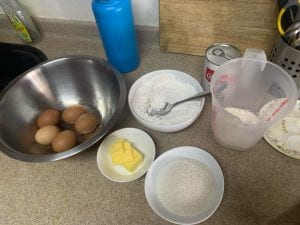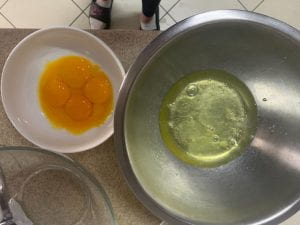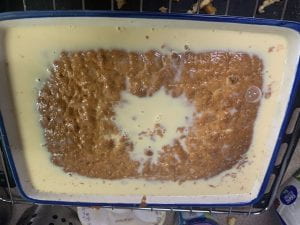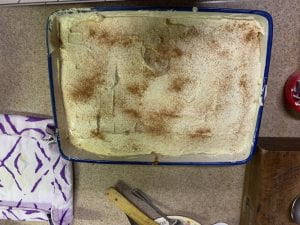I enjoy baking as apart of my creative outlet & given the extra free time provided on the DLP, I decided to test my limits and expand my baking repetoire by attempting a delicious yet somewhat intermediate classic – Tres Leches. This cake is a popular traditional delicacy within Mexico and Latin America – truly addictive with a light and airy sponge base, soaked in 3 milks, topped with whipped cream, making the dessert extremely rich, indulgent, and moist. In order to plan for making this dessert, I decided to research into different recipes. I wanted to find a recipe that was not only popular among its viewers, but also relatively on par with my capabilities – providing me with some challenge but not an amount I was incapable of handling. I explored recipes on a range of social media platforms. I specifically found a very simple one on TikTok which featured making the base cake layer out of boxed mix. Had I not been striving to expand my skill, I would have chosen this recipe, however I wanted to test myself more than this and also be able to get the full feeling of accomplishment having baked the entire dessert. I also explored a range of baking tutorials on YouTube, where I decided to use Laura Vitale’s recipe – who is a well-known at-home chef that I have been following since I was around 10. Personally, I feel that video recipe tutorials as opposed to written recipes are easier for me to follow as I am more of a visual learner. Videos are useful as I am able to understand the technique used to prepare the dish better, as well as visually understand how the consistency of whatever I am preparing is meant to be.
Laura’s Recipe:
Upon watching the video, I began organising my ingredients by measuring everything precisely. As I have been baking for some time, I have found that it is easier and more efficient to measure all ingredients ahead of time, before preparation, in order to have the process of making the dessert itself smoother.


separating the yolks from the whites
I then began preparing the dessert itself, where I experienced some newer techniques that were challenging at first, but ultimately enhanced my skill. I was able to learn the proper technique to folding egg whites into a batter without deflating it. This is done to ensure that a cake (or baked good) gets a nice rise and lift while it bakes as air is incorporated via the beaten egg white. Once the cake was made the process of preparing the milk soak was simple, however my impatience is what ultimately caused some issues with the final product. I believe that because I did not wait long enough for the cake to cool completely, when I poured over the milk soak, the condensed milk (which is significantly denser than the other milks) separated and sunk to the bottom. This didn’t affect the overall taste of the cake as it got very good feedback from my family – however, it did form a layer and the bottom of the cake which was not the most appetising texture but was easy to separate from the actual cake. I would say that to avoid this in future, I should try to set timers more so that I can ensure that my tasks are being done at the right times to avoid failure.

letting the milks soak into the cake

The final tres leches!
